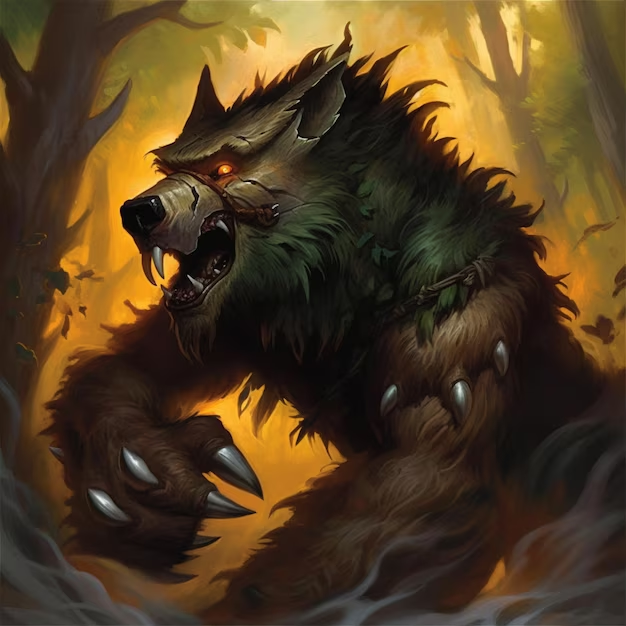Growing up, I always felt a special connection between the moon and the wolf, seeing them as symbols of strength and change. Like the wolf’s howl, the moon’s phases seemed to reflect my feelings and moods. Over time, I realized how this connection helped me face challenges and find courage when I needed it most.
moon:og4alzgmvog= wolf, a connection between the moon and the wolf has deep symbolic significance, representing cycles, intuition, and primal instincts. Wolves, often seen howling at the moon, symbolize strength, survival, and spiritual connection. This powerful imagery spans cultures and continues to inspire art, folklore, and modern media.
In this article, we’ll explore the deeper meanings behind the phrase “moon= wolf” and how this captivating symbol continues to inspire art, folklore, and modern culture.
The Historical and Cultural Bond Between the Moon and the Wolf–What Makes It So Captivating?
1. Roots of Mythology in All Civilizations
In mythology, the moon and the wolf have a long relationship. In Norse mythology, the wolf associated with Ragnarok in Fenrir represents a fundamental energy associated with the moon’s cycles. Roman mythology emphasizes the she-wolf, a symbol of protection and strength, caring for Romulus and Remus beneath the moon. According to Native American cultures, wolves are moon-related spirit guardians who represent the harmony and spiritual cycles of nature.
2. Astrological Symbolism
In astrology, the wolf represents curiosity and change, while the moon controls feelings and intuition. When combined, they emphasize the balance between emotions and instincts for survival, navigating through ambiguity and signifying protection and clarity.
3. Popular Culture and Folklore
Humanity’s battle with its natural side is reflected in the wolf legend, which is connected to the full moon. This relationship examines themes of identity, change, and striking a balance between one’s wild behaviors and social conventions in anything from folklore to culture such as Teen Wolf and Twilight.
The Myth of the Wolf That Ate the Moon – What You Should Know?
Norse mythology is where the idea of a wolf eating the moon began. In the story, Hati Hróðvitnisson, or just Hati, is the wolf who will search for and eventually eat the moon (Máni) at Ragnarök and the world’s end that is predicted. Sköll, Hati’s brother, gets the same result as he pursues the sun (Sól).

This story represents the strength of cosmic authorities and the cyclical process of regeneration and destruction. According to Norse cosmology, the wolves’ quest for the sun and moon symbolizes the cosmic balance and the certainty of change.
Wolves and the Moon– A Scientific and Ecological Exploration!
Because they are twilight by nature, wolves’ hunting habits are impacted by the light of the moon. They can see better under a full moon, which makes it simpler for them to hunt and explore in the dark. Wolves depend on communication and pack cooperation, and the moonlight improves their capacity to track prey and cover large areas. The lunar cycle also influences their activity levels; wolves are more energetic and proficient hunters during full moon phases.
In terms of ecology, Wolves indirectly promote biodiversity and the growth of vegetation by controlling prey populations such as elk and deer. Because they encourage the flourishing of plant and animal species, attempts like the re-introduction of wolves to Yellowstone National Park have shown how important they are to ecological health. The moon’s phases are reflected in this continuous interplay, representing the natural world’s harmony.
Read: india national cricket team vs south africa national cricket team match scorecard!
Wolves and the Moon–Spiritual Insights and Psychological Depths!
In spiritual traditions, the moon is a symbol of wisdom and change, and the wolf is a symbol of strength, freedom, and direction. Together, they are significant in shamanic traditions, where the wolf, as a totem animal, aids people in discovering their inner truths and navigating personal growth. The moon-wolf relationship is a potent symbol of illumination and self-discovery since the full moon is said to enhance spiritual understanding.
The moon and wolf are symbols of the unconscious psyche in Jungian psychology. The wolf represents innate senses and unadulterated energy, while the moon represents buried emotions and intuition. Their relationship symbolizes the process of facing one’s shadow self and accepting both light and dark in order to achieve balance and personal growth.
How do different cultures depict the relationship between the moon and wolves?
The connection between the moon and wolves appears in many cultural stories, often highlighting ideas about nature, transformation, and spirituality. Here are some key examples:
1. European Stories
Norse mythology: In Norse mythology, two wolves named Sköll and Hati follow the sun and moon across the sky. Their search is associated with solar and lunar eclipses, and when they finally succeed, Ragnarök, a period of disorder and destruction, arrives. These tales demonstrate how the moon and wolves represent the strength and unpredictable character of the natural world.
Celtic Religions: In Celtic mythology, wolves are associated with lunar deities. Wolves are considered particularly active and strong during the full moon, signifying protection and untamed energy. A wolf’s howl is said to summon the moon, connecting it to the natural and spiritual cycles.
2. Native American Beliefs
Wolves are considered as protectors and guides by many Native American tribes. They think that wolves communicate with the moon’s energy through their howls and hunt at night using its light. This shows how closely wolves and natural cycles are related.
3. Zoroastrianism
The moon is a symbol of light and order in Zoroastrian mythology, while wolves are viewed as beings of disorder and darkness. Their relationship symbolizes a conflict between good and evil, with the wolf’s ferocious and wild nature contrasting with the moon’s light.
4. Roman Mythology
Wolves are associated with strength and protection in the tale of the Capitoline Wolf, who raised Romulus and Remus. The tale highlights wolves as symbols of strength and caring, even though they are not directly related to the moon, just as the moon offers light in the dark.
5. Korean Folklore
Wolves represent strength and independence in Korean culture. Wolves are considered to be a symbol of freedom and protection since the full moon is believed to increase both qualities. This link shows how the moon is thought to affect nature.
6. Proto-Indo-European Myths
The moon’s phases are clarified by ancient early Indo-European tales about wolves chasing and devouring it. These stories demonstrate how early humans utilized storytelling to comprehend the natural world by clearly linking wolves to the cycles of the moon.
What Do Werewolves, Digital Art, and NFTs Have in Common Today?

- Werewolves in Popular Media
- A common topic in novels, films, and television series like Twilight is the connection between werewolves and the full moon.
- It represents a conflict between societal conventions and instincts as humans shift into wolves.
- These stories explore inner conflict, emphasizing the battle between one’s personal identity and wild feelings.
- Wolves and the Moon in Digital Art and NFTs
- The moon-wolf connection is reimagined in digital art and NFTs, symbolizing transformation and identity.
- Artists use images of wolves howling at the moon to convey themes like freedom, growth, and connection to nature.
- NFTs featuring this motif have become popular, offering collectible digital pieces with deep emotional and philosophical meanings.
Read: Eagles Vs Chiefs – Join The Excitement!
FAQs:
1. What does it mean when the moon is a wolf?
When the moon is referred to as a wolf, it represents the close relationship between transformation, natural cycles, and natural behavior. Themes of spirituality, intuition, and the connection between humans and nature are frequently reflected in this imagery.
2. What happens when a werewolf sees a full moon?
According to mythology, a werewolf’s change into a wolf-like creature begins when they see a full moon. This represents the conflict between wild nature and humans as well as the emergence of basic desires.
3. What Is the Astrological Connection Between the Moon and the Wolf?
In astrology, the wolf refers to instinct, power, and direction, while the moon represents feelings, sense, and mental processes. Together, they emphasize intuition, transformation, and the connection to one’s inner self while highlighting the harmony between emotional depth and instinctive behavior.
4. What Lessons Can We Learn From the Moon and Wolf Connection?
This relationship teaches us about embracing change, balancing emotions and instincts, and staying connected to the natural cycles of life.
5. Does the Link Between Wolves and the Moon Have Scientific Support?
In contrast with their at-night nature, wolves are indeed more active during full moon phases since improved visibility facilitates hunting and communication.
Conclusion:
The connection between the moon and the wolf is a powerful symbol that resonates deeply across cultures, mythology, and the natural world. Representing cycles of change, transformation, and the balance between instinct and intuition, this connection offers profound insights into both the physical and spiritual realms. Whether explored through folklore, astrology, or ecological studies, the moon and the wolf continue to inspire and remind us of the deep interconnection between humanity, nature, and the mysteries of the universe.
Their combined symbolism encourages us to embrace both our primal instincts and the wisdom of change, ultimately guiding us toward self-discovery and growth.
Read more:



